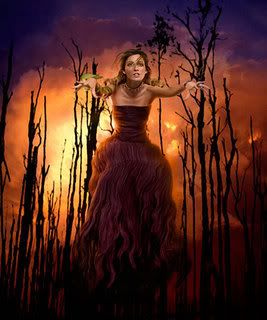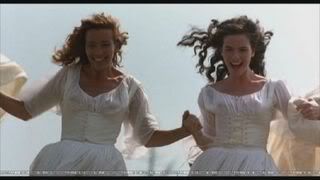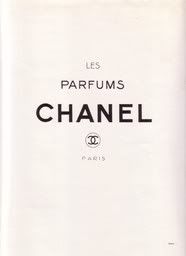.jpg) And for those on a budget or searching for an easier alternative to savour the allure of Coromandel, Zino is a choice that can be found easily on discounters and online stores, being utterly underrated for absolutely no sane reason at all. I hope after this review a couple of people will summon the courage to search for it, as it's totally worth it. But perhaps the greatest recommedation would be that it has been gracing the oh-so-fine body of Captain Jack Sparrow, né Johnny Depp for quite some years now (Fittingly as it was first issued in 1986). Who can resist his charms, his chiseled face and bohemian attitude? Personally, I could see it on someone like Vincent d'Onofrio as well. If you're fond of aquatics and/or a fan of a girly Robert-Patterson-like allure (of Twilight fame), you can stop reading right now, it will only get painful.
And for those on a budget or searching for an easier alternative to savour the allure of Coromandel, Zino is a choice that can be found easily on discounters and online stores, being utterly underrated for absolutely no sane reason at all. I hope after this review a couple of people will summon the courage to search for it, as it's totally worth it. But perhaps the greatest recommedation would be that it has been gracing the oh-so-fine body of Captain Jack Sparrow, né Johnny Depp for quite some years now (Fittingly as it was first issued in 1986). Who can resist his charms, his chiseled face and bohemian attitude? Personally, I could see it on someone like Vincent d'Onofrio as well. If you're fond of aquatics and/or a fan of a girly Robert-Patterson-like allure (of Twilight fame), you can stop reading right now, it will only get painful.I had written on my Chanel Coromandel perfume review, when I compared the scent to a cinnabar-hued brocade jacket, upper button undone with black camelia Chanel earrings: "The initial impression is that of a citrusy, orange-like pipe tobacco mix rolled in powder, much like the one encountered upon meeting that vixen little scent called Fifi by lingerie designer Fifi Chachnil or a slightly less milky Fumerie Turque. [..]Perhaps the orange impression derives from the inclusion of frankincense, a resin that sometimes gives off a sweet citric tang while burning. A sweet lush note throughout is echoing subtly like vanilla pods immersed in fruity liquor and it opens up and expands on the wings of aged patchouli, mellow, soft, sweet and inviting [...]with a touch of Borneo by Serge Lutens and Prada thrown in for good measure. [...] The pervading dryness along with just a touch of frankincense for a sense of mystery, not showcasing amber in any great degree all the while, provides a great balance to the sweeter vanilla elements and makes the whole not puff up in blue clouds of smoke, but stay the night on warm skin and well used sheets".
Zino starts on a classic masculine accord of lavender, clary sage and bergamot, bracing, nose-tingling like the top notes of Jicky, almost recalling a fougère, but immediately we're drawn into the maze of oriental woods, where the dark green of patchouli hypnotizes the senses with its sweet, beckoning and a little overwhelming scent and a trompe l'oeil hinting at tobacco (A Davidoff fragrance without some allusion to it? Unthinkable). Zino's big rosy heart worn on its sleeve is the perfect accompaniment to the green leaves with moth-repelling properties, and serves to smoothen the former, alongside the other subtle floral elements. Every ingredient bursts into life on the skin and despite the potent opening the scent manages to appear as rather subdued in later stages. Once upon a time touted as the "fragrance of desire", I admit that for this woman on this day, it still seems good enough to eat and amazingly sexy while we're at it too.
.jpg) Sheldrake’s handwriting is all over 2007's Coromandel, which would make the comparison with his previous Borneo 1834 for Serge Lutens (2005) a natural fit. The two fragrances share a pronounced similarity at the drydown, a fuzzy, synthesized woody-amber drydown like ambroxan (much more pronounced though in -say- Lolita Lempicka au Masculin). Zino also shares in the traditional ambery fade-out after its scultural masculine top, its darkness an ink-like blob on thick matte paper, but lacks the distinct coffee note that runs through the heart of Borneo, instead opting for extending the note of patchouli to its chocolate-like extremes. Borneo on the other hand is an intensely camphoraceous patchouli laced with dark-roasted coffee and cocoa notes and much dryer, while Coromandel, perhaps due to its eau de toilette concentration and axiom of "application with abandon" alluded to by the big, honking bottle, seems airier and less saturated than both. Airier for an oriental woody, mind you! Its kinship with the original Prada should give you an idea of the ballpark we're talking about. The sillage of every scent is delicious; a mysterious wake that will have people swerve to catch a whiff and ask you what it is.
Sheldrake’s handwriting is all over 2007's Coromandel, which would make the comparison with his previous Borneo 1834 for Serge Lutens (2005) a natural fit. The two fragrances share a pronounced similarity at the drydown, a fuzzy, synthesized woody-amber drydown like ambroxan (much more pronounced though in -say- Lolita Lempicka au Masculin). Zino also shares in the traditional ambery fade-out after its scultural masculine top, its darkness an ink-like blob on thick matte paper, but lacks the distinct coffee note that runs through the heart of Borneo, instead opting for extending the note of patchouli to its chocolate-like extremes. Borneo on the other hand is an intensely camphoraceous patchouli laced with dark-roasted coffee and cocoa notes and much dryer, while Coromandel, perhaps due to its eau de toilette concentration and axiom of "application with abandon" alluded to by the big, honking bottle, seems airier and less saturated than both. Airier for an oriental woody, mind you! Its kinship with the original Prada should give you an idea of the ballpark we're talking about. The sillage of every scent is delicious; a mysterious wake that will have people swerve to catch a whiff and ask you what it is.Ultimately, between the three, Coromandel is the daytime, easier and more powdery version, Borneo more suitable for evenings and trend-setters, while Zino is the one reserved for sexy men and for women not afraid of five-o-clock shadows on them. If you're among the latter, do try Zino for yourself too, you'll see it acts like a fedora over long hair.
Notes for Zino by Davidoff:
Top: lavender, palisander, clary sage, bergamot
Heart: geranium, rose, lily-of-the-valley, jasmine
Base: patchouli, cedar wood, sandalwood, vanilla
Notes for Coromandel by Chanel
Benzoin, patchouli, woodsy notes
Notes for Borneo 1834 by Lutens
Patchouli, Camphor, Cardamom, Cistus, Galbanum, Cacao
pic of actor Vincent d'Onofrio via fanpop.com, Sarah Ranes portrait via indiepublic.com
.jpg)









